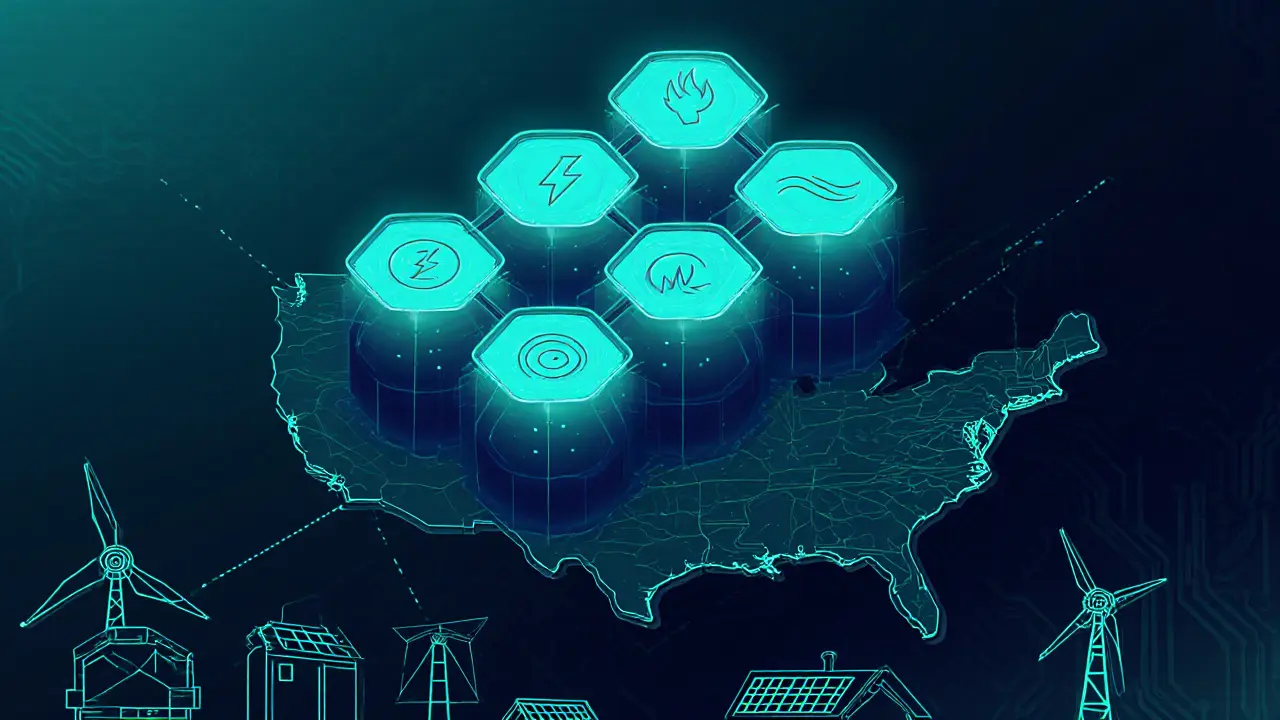Blockchain Energy Markets: Power Trading Meets Distributed Ledger
When talking about Blockchain Energy Markets, the application of blockchain to enable transparent, peer‑to‑peer buying and selling of electricity, gas or renewable credits. Also known as decentralized energy trading, it turns the grid into a digital marketplace where anyone can list supply, match demand and settle instantly.
Key pieces that make the system work
The backbone of any blockchain energy market is Blockchain, a tamper‑proof ledger that records every transaction in chronological order. It gives participants confidence that the data
can’t be altered after the fact. Smart Contracts, self‑executing code that enforces trade rules without a middleman, sit on top of the ledger and automatically match buyers with sellers, release payments and even verify that the energy was delivered via IoT meters. Together they enable the semantic triple: Blockchain enables smart contracts, smart contracts automate energy trades.
Another critical player is Crypto Mining, the process of securing a blockchain by solving computational puzzles. Mining consumes a lot of electricity, so understanding its impact is essential for anyone looking at energy markets. The relationship can be expressed as: Crypto mining drives energy demand, energy demand shapes blockchain energy market incentives. Recent regulatory posts about China’s mining ban and Bitcoin mining difficulty show how shifts in mining policy can instantly affect power prices and the economics of decentralized trading platforms. Beyond the core tech, real‑world projects already prove the concept. Supply‑chain‑focused posts illustrate how blockchain provides traceability for renewable certificates, letting producers prove that a megawatt‑hour really comes from wind or solar. Energy‑focused pilots in Europe use smart contracts to settle intra‑community trades in minutes, cutting out the need for bulky paperwork. These examples answer the question: How does blockchain improve transparency, speed and cost in energy markets? The answer lies in three attributes – immutability, automation, and tokenisation – each turning a traditionally opaque system into an open, verifiable one. What you’ll see next is a curated list of articles that dive deeper into each piece of the puzzle. From licensing guides that explain how regulators treat blockchain‑based energy platforms, to tokenomics breakdowns of projects that tokenise carbon credits, the collection covers practical steps, risk factors and emerging opportunities. Whether you’re a trader curious about peer‑to‑peer power swaps, a developer building a smart‑contract template, or an investor tracking the impact of mining on grid demand, the posts below provide actionable insight and up‑to‑date analysis.
Ready to explore the full landscape? Scroll down to uncover detailed guides, case studies and regulatory overviews that will help you navigate the fast‑moving world of blockchain energy markets.

Blockchain Powering Modern Energy Markets
May 12, 2025, Posted by Ronan Caverly
Explore how blockchain transforms energy markets with peer-to-peer trading, smart contracts, tokenized RECs, and future trends, backed by market data and implementation guidance.
MORESEARCH HERE
Categories
TAGS
- decentralized exchange
- crypto exchange review
- cryptocurrency
- crypto coin
- CoinMarketCap airdrop
- smart contracts
- tokenomics
- cryptocurrency exchange safety
- crypto exchange
- cryptocurrency airdrop
- crypto airdrop
- cryptocurrency exchange
- crypto airdrop guide
- blockchain token distribution
- DeFi
- crypto exchange scam
- crypto airdrop 2025
- Ethereum
- cross-chain interoperability
- ERC-20
